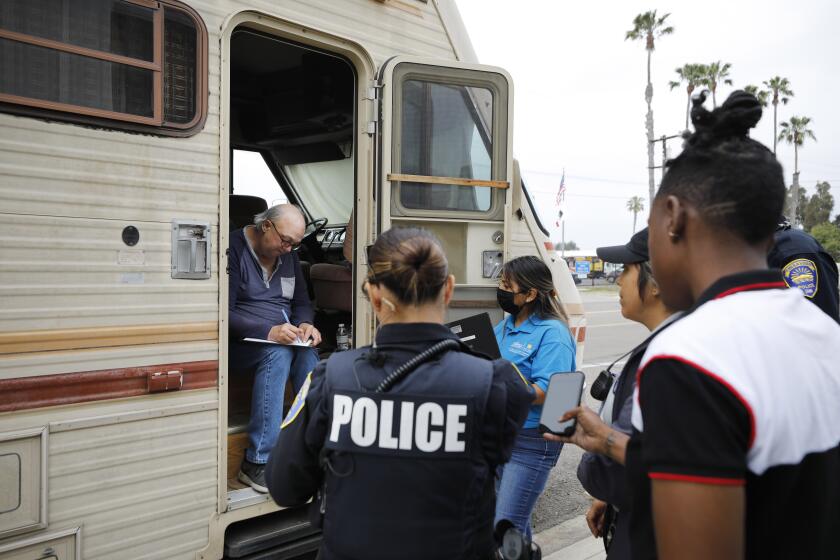Child heatstroke deaths in cars: Accident or crime?
Charges filed in less than half of child vehicular heatstroke cases since 1990, organization says
Last week, a young mother of four was sentenced to 10 years in prison for unknowingly leaving her infant son in a car, where temperatures rose to more than 125 degrees.
Baby Giovanni died at a hospital in July 2013, after his parents realized he wasn’t inside their El Cajon apartment, as they had assumed, and then found him in the vehicle parked outside. He had been in the car for 14 hours, prosecutors said.
He was 4 months old.
No evidence was offered that either Jessica Quezada, 24, or her husband (who was acquitted of felony child abuse) had intentionally left their baby in the car after returning from a shopping trip to Walmart on July 26, 2013. Although the prosecution contended that drug-use was a factor in the case, Quezada’s lawyer argued that what happened to Giovanni was a tragic accident, not a crime.
Experts say there are an average of 37 vehicular heatstroke fatalities involving children in the United States each year. The circumstances behind those deaths typically fall into three categories: the child was unknowingly left in a car by parents or caregivers, the child got into the vehicle on his or her own or the child was left in the vehicle intentionally.
In a small number of cases, the circumstances are unknown.
According to KidsAndCars.org, a Kansas-based nonprofit child safety organization, there have been just under 750 heatstroke deaths of children in vehicles between 1990 and June of this year. In 695 cases tracked through 2014 – a number that reflects the number of heatstroke incidents nationwide, not the number of children involved in each incident – 45 percent of the adults involved did not face criminal charges.
Of those who were charged, 28 percent were convicted, 7 percent were not, according to the organization’s data. The other cases are either still pending or their outcomes are unknown.
“It has gotten higher recently,” said Janette Fennell, president and founder of KidsAndCars.org, referring to the number of convictions. She said many people charged in those cases, usually grieving parents or caregivers, end up pleading guilty before trial.
One of the organization’s goals is to educate the public about dangers that exist when children are in and around motor vehicles. Its leaders acknowledge that in many heatstroke cases they’ve followed, the person responsible for the child appeared to be loving, caring and protective.
“The problem is that very few people on earth – they really don’t understand how this happens,” Fennell said. She noted stories of severely sleep-deprived parents or caregivers on autopilot, who simply forgot that a child was in a rear-facing car seat, or they failed to adjust to changes in their daily routines.
“There’s so much more to this,” Fennell said.
In 2005, The Associated Press analyzed more than 310 fatal incidents that had occurred over the previous decade and found that prosecutions and penalties varied widely, depending on a number of factors. The news organization found that mothers and fathers were charged and convicted at about the same rates, but mothers were 26 percent more likely to do time.
Day care workers and other paid baby sitters were more likely than parents to be charged and convicted, but they are jailed less frequently than parents, and for less than half the time.
So far this year, 23 children have died of heatstroke in the United States after being left in vehicles, according to Jan Null, a meteorologist and lecturer at San Jose State University who studies the issue. Most of the children were under age 2. The oldest was 4 years old.
“A car acts as a greenhouse,” Null said, explaining that the sun’s energy can heat objects inside a vehicle, such as a dashboard or steering wheel, to 200 degrees. Those objects warm up the air trapped inside the vehicle rapidly.
“Most of the heating is within the first half-hour,” Null said, adding that even if it’s only 70 degrees outside, the inside of a car can reach 99 degrees in about 20 minutes. After 10 more minutes, the car’s interior temperature could climb to 104 degrees or higher.
That’s when heatstroke occurs, he said. Noting that a child’s body can overheat three to five times faster than an adult’s, he said a child left in a car on a very hot day could die in 15 minutes or less.
Based on media reports, Null counted 637 deaths nationwide of children in hot cars between 1998 and 2014. Of those, 53 percent were cases in which a child was forgotten by a caregiver, 29 percent were cases in which a child was playing unattended in a vehicle, and 17 percent were cases in which a child was left in a vehicle deliberately by an adult not necessarily to do them harm.
Examples of the latter include cases in which someone left a child in car to go into a store, get a haircut or go to work, Null said.
A case in Cobb County, Georgia is receiving heavy media attention partly because prosecutors have accused the defendant, Justin Ross Harris, of deliberately leaving his 22-month-old son to die in an SUV last year. The father was indicted on charges including malice murder, felony murder and cruelty to children.
He has pleaded not guilty and is awaiting trial.
If Ross Harris is convicted, his would be the first case among the hundreds Null has analyzed in which there was “actual criminal intent to do the child harm.”





